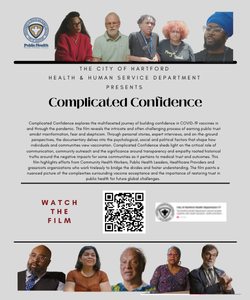By Demetrius Dillard
No one can mention American history without mentioning The Great Migration.
With the exception of the Civil Rights Movement of the mid-20th century, The Great Migration is arguably the most transformative movement in recent American history, marking a seismic demographic and cultural shift that would considerably impact the nation for generations to come.
It stands among the most iconic and memorable times in America’s near 250-year history along with the likes of The Abolitionist Movement and The Great Awakening.
Between the 1910s and 1970s, an estimated 6 million Black Americans migrated to urban metropolitan areas of the Northeast, Midwest and West Coast.
As the children of Israel made their exodus from a place of bondage to the promised land, Black Americans took a similar course of action, fleeing the atrocious racism of the Jim Crow South in hopes of encountering economic opportunity, freedom and better quality of life.
There were actually two Great Migrations: one in the earlier part of the 20th century and the other toward the middle of the century. This massive shift would leave lasting impacts on the fabric of American society, from music, to the arts, to cuisine, fashion and more.
The Chicago Defender, founded by Robert Sengstacke Abbott in 1905, is widely credited with playing a major role in The Great Migration’s origin.
The paper was distributed to various parts of the Deep South in the hands of many Black Americans looking to escape the horrific conditions they had to face on a daily basis. Messaging and editorial content within the publication not only encouraged Black Southerners to move north, but exposed the harsh realities and injustices that dominated the Jim Crow South at the time.
Some historians suggest that the establishment of the National Urban League in 1910 spurred what would become The Great Migration. The Urban League had its origins in New York City, which would become a hotspot for Blacks in the South, attracting millions of migrants between the first and second Great Migration waves.
“While the Great Migration had not officially started, many African Americans had already begun the journey north, but had difficulty integrating into the urban lifestyle of the major northern cities,” says a blog published by Boston’s Emerson College.
“The National Urban League was founded in New York City to help African American migrants assimilate to urban life, such as job opportunities, housing arrangements, and economic education.”
Some notable major cities that were landing spots for Black migrants included New York, Philadelphia, Baltimore, Washington, D.C., Pittsburgh, Cleveland, Indianapolis, Detroit, Chicago, Los Angeles and Oakland.
In an interview with National Public Radio, Pulitzer Prize-winning journalist and author Isabel Wilkerson reflected on how the Great Migration changed the course of human history.
“It (Great Migration) began very slowly and then went from being a trickle to a flood of people exiting the South. And they were seeking refuge. They became, in some ways, like political refugees within their own country,” Wilkerson said, characterizing Jim Crow as a caste system.
“It stands out because this was the first time in American history that American citizens had to flee the land of their birth just to be recognized as the citizens that they had always been. No other group of Americans have had to act like immigrants in order to be recognized as citizens. So this Great Migration was not a move. It was actually a seeking of political asylum within the borders of one’s own country. They were defecting a caste system known as Jim Crow. It was an artificial hierarchy in which everything that you could and could not do was based upon what you looked like.”
Below is a timeline reflecting a chronology of the collective Great Migration of the 20th century:
1905 — The Chicago Defender is founded
- Chicago’s premier Black newspaper used impactful journalism to play a crucial role in attracting Black residents of the Deep South to northern cities, according to some historians.
1910 — National Urban League is established
- As documented in research cited by Emerson College scholars, numerous Black people began heading north as early as 1910, due in large part to the influence of the National Urban League, founded in New York City. The organization was founded to assist Black American migrants adapt to urban life, from job opportunities, to housing, to economic education, according to Emerson scholars.
1915 — Inception of The Great Migration
- What is known as the first “wave” or phase of The Great Migration officially began in 1915, according to many scholars, and ended around 1930. More than 1.5 million Black Americans migrated from the South to prevalent industrial cities of the North.
1914 to 1918 — World War I occurs
- This start of the first world war marked a watershed moment during The Great Migration movement. Numerous factory jobs were left vacant by drafted soldiers.
- “Because of this, many northern industry opportunities opened up and businesses specifically recruited African Americans in the south, offering them discount housing or low transportation and moving costs as incentives to move north,” an Emerson blog says.
1917 to 1923 — Violence and unrest pervades the U.S.
- A number of race riots during the Red Summer of 1919 in addition to several massacres that unfolded after the conclusion of World War I was a bloody time in American history. A White mob attacked a thriving community known as Black Wall Street in Tulsa, Okla., in 1921. The Rosewood Massacre in Florida (1923) resulted in the death of dozens of innocent Black men, women and children. This sequence of events prompted a number of Black people to migrate north.
1920s — The height of the Harlem Renaissance
- The peak years of the Harlem Renaissance, a cultural revolution that transpired in Harlem, N.Y., was a byproduct of The Great Migration. At the end of the decade, however, The Great Depression would have crippling effects on the nation, and subsequently, The Great Migration movement.
1940 to 1970 — The “Second” Great Migration
- With millions of job openings available due to the nation’s recovering economy and involvement in World War II, the next wave of The Great Migration began to take form in the 1940s and continued for the next three decades. Within this 30-year period, an estimated 5 million-plus Black Americans migrated north with the same objective as the first wave of migrants: the pursuit of freedom, equality and economic opportunity.
Image 1 is provided by The Abbott Sengstacke Family Papers/Robert Abbott Sengstacke via Getty Images
Image 2 is provide by Jack Delano/Library Of Congress via Getty Images






